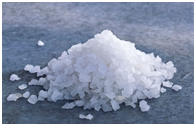

Context
Recently, the Scientists from Indian Space Research Organisation (ISRO) have mapped out the global distribution of sodium on the Moon’s surface.
About
- The research has been done using CLASS instrument carried by the second Indian Moon mission, Chandrayaan-2.
- It uses a large area soft X-ray spectrometer.
- This is the first effort to provide a global-scale measurement of sodium on the lunar surface using X-ray fluorescent
|
Characteristics of Sodium:
|
New Findings:
- The study found a thin veneer of sodium atoms that are weakly bound to the lunar surface apart from the minor quantities found in lunar rocks.
- These sodium atoms on the surface are liberated when enough energy is given to them by solar ultraviolet radiation and solar wind ions.
- Sodium is the only element apart from potassium that can be observed through telescopes in the lunar atmosphere (its exosphere).
- This new map of sodium would enable understanding of the surface-exosphere
X-ray fluorescent spectra:
- X-ray fluorescence is commonly used to study the composition of materials in a non-destructive manner.
- When the sun gives out solar flares, a large amount of X-ray radiation falls on the moon, triggering X-ray fluorescence.
- The CLASS measures the energy of the X-ray photons coming from the moon and counts the total number.
- The energy of the photons indicates the atom (for instance, sodium atoms emit X-ray photons of 1.04 keV) and the intensity is a measure of how many atoms are present.



